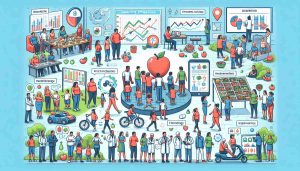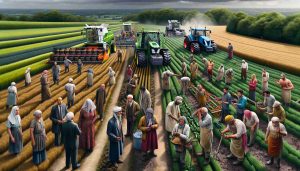Agricultural Policy Faces Uncertain Future Amid Legislative Disputes
3 min read
A potential shift looms as key legislation confronts critical juncture. As the deadline for the farm bill’s expiration approaches, intricate negotiations continue to stall progress. Amidst discussions about work obligations and the conclusion of pandemic aid programs, uncertainty plagues the future of agricultural policy.
Legislators grapple with diverging perspectives on crucial provisions. Differences in opinion emerge prominently, causing friction throughout deliberations. The fate of funding for essential programs hangs in the balance as policymakers strive to find common ground amidst varying priorities.
Challenges loom large amidst the political landscape. The intricate web of governmental dynamics adds complexity to an already turbulent situation. With multiple interests at play, the path forward remains shrouded in ambiguity.
Amidst the turbulence, one certainty emerges – the need for compromise. As discussions evolve and tensions rise, the call for collaboration becomes increasingly urgent. Finding middle ground becomes paramount to ensuring the continuity of vital support systems for farmers and beneficiaries alike.
Outcomes remain undefined as critical decisions await resolution. With the expiration date looming, the stakes heighten for all involved parties. The ultimate trajectory of agricultural policy hinges on the ability of lawmakers to navigate through the current impasse and reach resolutions that prioritize the well-being of agricultural communities.
The Future of Agricultural Policy: Unveiling Key Questions and Challenges
As the debate surrounding the agricultural policy reaches a critical crossroads, new questions emerge that shed light on the uncertainties facing legislators and stakeholders alike.
What are the most pressing questions amidst the legislative disputes? At this pivotal moment, key inquiries surface, including the implications of delayed decisions on farmers, the impact of diverging perspectives on the effectiveness of support programs, and the overarching question of how compromise can be achieved in a politically charged environment.
What are the key challenges at play? The challenges confronting the agricultural policy landscape are multifaceted – from balancing budgetary constraints with the need for robust support mechanisms to navigating the complexities of intertwining political priorities. The debate is further complicated by the urgency to address pressing issues while ensuring the long-term sustainability of agricultural programs.
What controversies underscore the current situation? Controversies abound, with disagreements on funding allocations, the scope of assistance programs, and the extent of governmental intervention in the agricultural sector. The clash of ideologies and interests threatens to impede progress and leaves the future of agricultural policy hanging in the balance.
Advantages and Disadvantages: The advantage of the current legislative disputes is the opportunity for comprehensive review and potential reform of outdated policies to better meet the evolving needs of farmers and the agricultural industry. However, the disadvantage lies in the prolonged uncertainty, which can disrupt planning and implementation of critical programs, leading to potential setbacks for stakeholders.
In navigating these challenges, the imperative for all involved parties remains clear – the need for collaboration, compromise, and a concerted effort to prioritize the well-being of agricultural communities. The path forward is fraught with complexity, but the resolution of these disputes holds the key to shaping the future of agricultural policy in a rapidly changing environment.
For further insights into the evolving landscape of agricultural policy, visit agriculturejournal.com.






